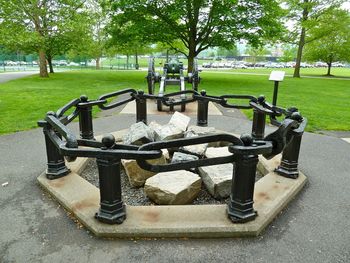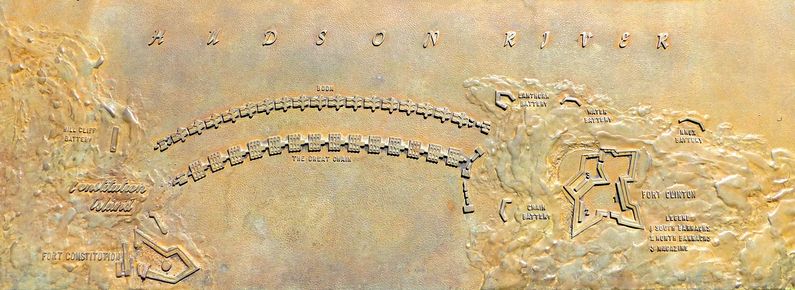Fortress West Point
|
Fortress West Point (1778-1783, 1802-Present) - First established in 1778 by General George Washington in Orange County and Putnam County, New York. Garrisoned through the end of the Revolutionary War. Designated the headquarters of the U.S. Corps of Engineers and the United States Military Academy in 1802. Revolutionary War (1775-1783)Established in 1778 by General George Washington at the strategic "S" curve in the Hudson River at West Point and across the river at Constitution Island. The loss of Fort Montgomery and Fort Clinton on 6 Oct 1777 forced construction of a large number of new fortifications that provided support to each other and could block any enemy attempt to get past West Point. A massive iron chain and a log boom were built to block the Hudson River and strung between West Point and Constitution Island. Batteries, Forts and Redoubts were built to provide protection for this chain and firepower to sink any approaching enemy ships. Three levels of defenses were constructed to protect the river batteries from land attack and bombardment. The river defenses of the chain and the log boom included Fort Arnold, Chain Battery and Battery Lanthron on the West Point side of the river and Fort Constitution, Hill Cliff Battery and Marine Battery on Constitution Island. To the southwest of Fort Arnold were placed three forts and associated artillery batteries. Fort Webb, Fort Wyllis and Fort Meigs could place advancing enemy ships under artillery fire before they could see the chain and boom and their defenses. Fort Putnam (1) was placed to the west of these three forts on even higher ground and could cover most of the other forts and batteries with artillery fire. Across the river the North and South Redoubts protected the land side approaches with three gun batteries each. Land side protection of all these defenses was accomplished by a series of seven numbered redoubts and several named redoubts strategically placed around both the West Point side of the river, Constitution Island and the east side of the river. The redoubts formed the outer ring of protection and had associated and sometimes detached artillery batteries that covered the land side approaches to West Point. These fortifications were garrisoned through the end of the Revolutionary War. In 1802 the military reservation was designated the headquarters of the U.S. Corps of Engineers and the United States Military Academy. The role of the reservation as a fortification ended with the designation as a service academy. Current StatusMust See! Part of United States Military Academy, Active Military Installation, Orange County, New York. Fort Putnam has been restored and is open for tours conducted through the Visitor Center during the summer months. On active Military installation and access may be restricted.
See Also: Sources:
Links:
Visited: 1-14 May 2012
| ||||||


